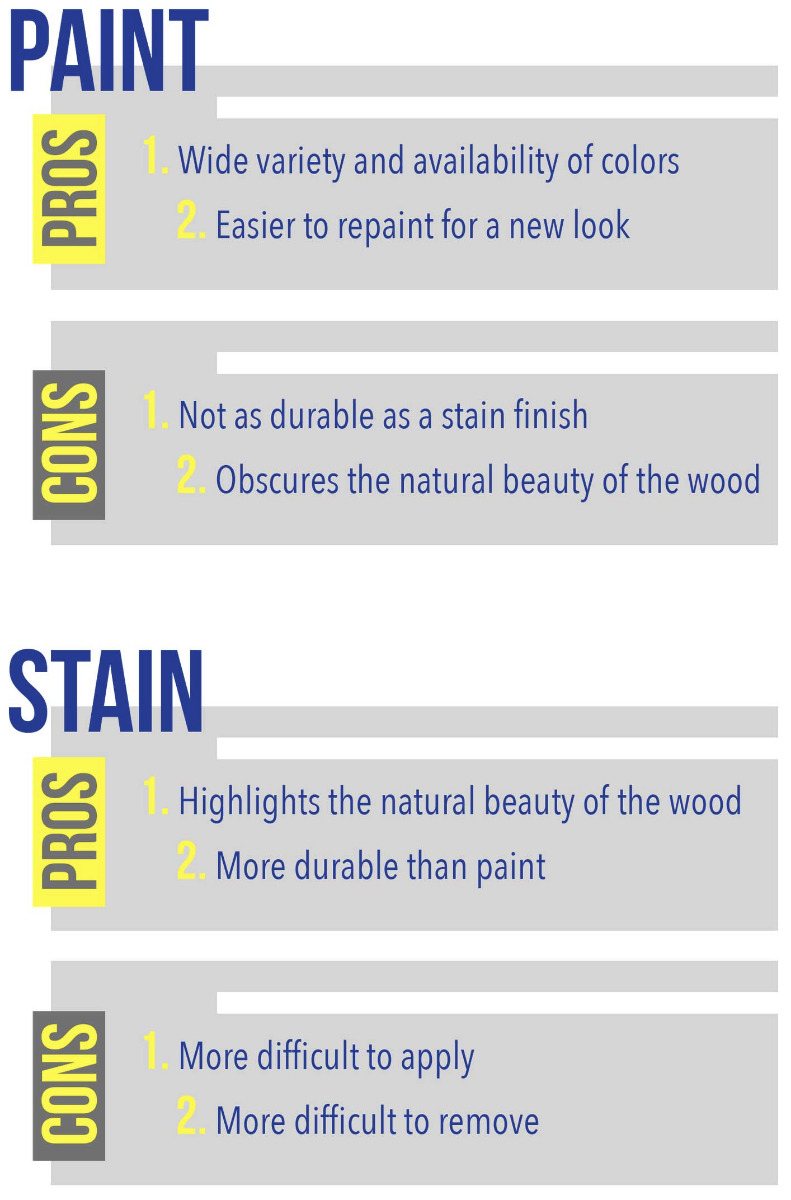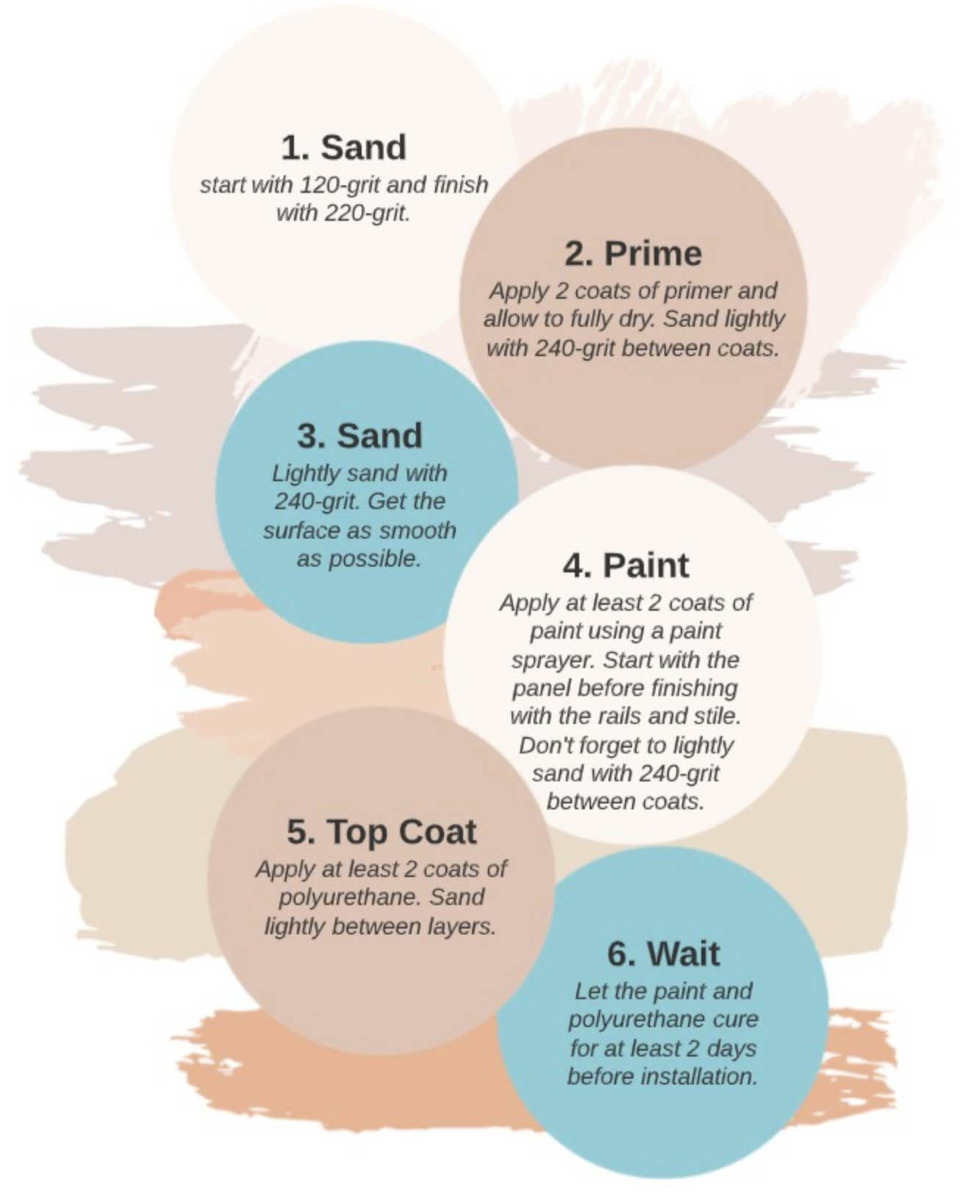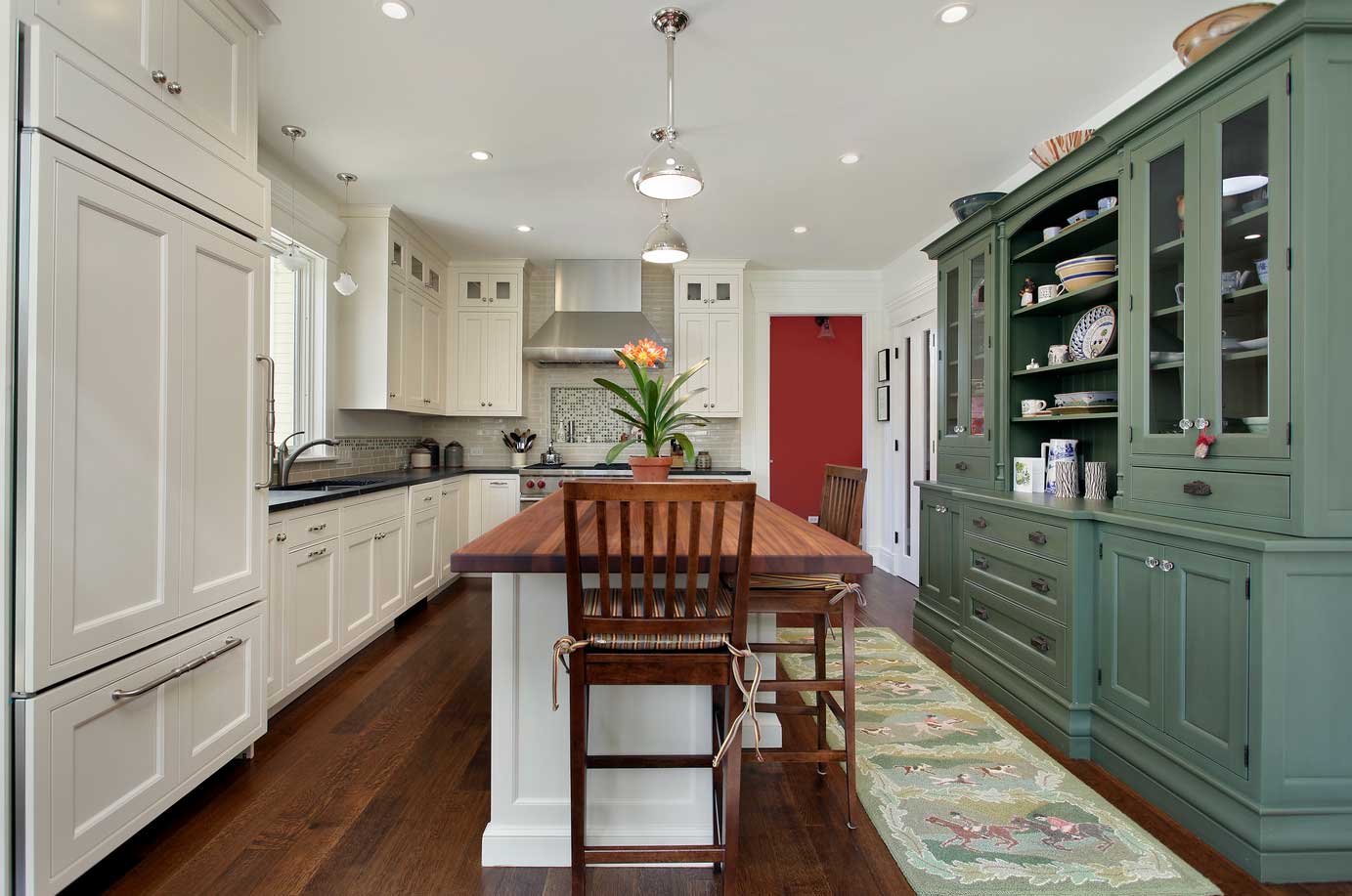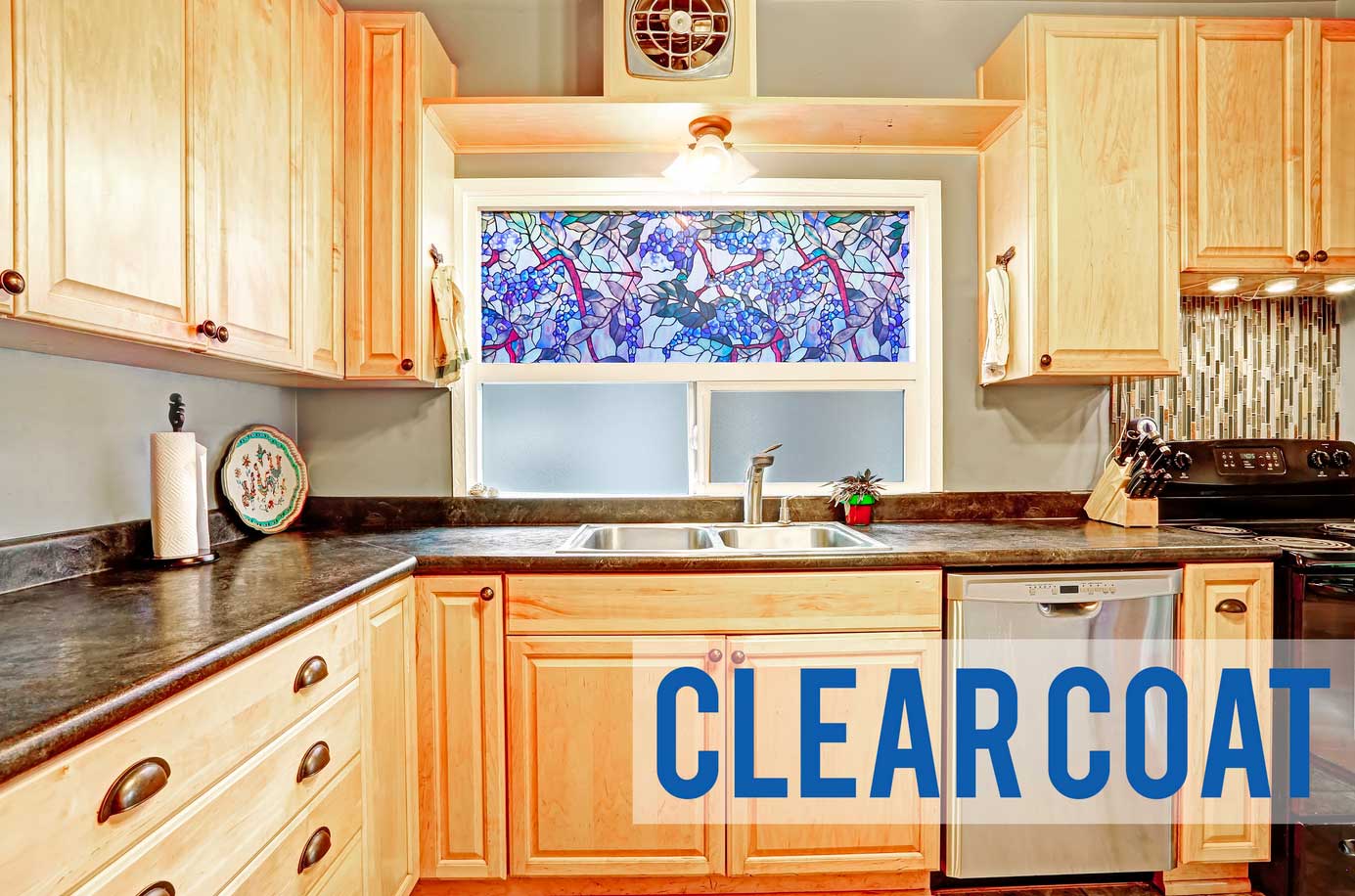Complete Guide to Finishing Cabinets
Mar 12th 2021
Regardless of style, you will have to choose a finish for your cabinets. However, how you accomplish this is completely up to you. Cabinets are typically finished with paints, stains, or clear coats. Properly applying the correct finish to your cabinets is critical for extending their lifespan.
Cutting corners with either the materials or method can cause your cabinets to become damaged well before the end of their natural life. Given how important this step is in protecting your cabinets, we decided to make a complete guide on finishing your cabinets like a pro.
Table of Contents
- Plan Your Project
- Consider Your Climate
- Find Your Finish
- Pros & Cons of Paint and Stain
- Painting
- Drying Time For Paint
- Staining
- Drying Time for Stain
- Clear Coat
- Finishing Touches
To achieve this goal, we will walk through the important steps from start to finish (no pun intended!). In this guide, we will cover things like choice of material, must-have equipment, how to choose a finish, and, most importantly, the proper steps to get the highest quality. And so, we will begin with that all-important first step: a plan.
Disclaimer: This blog post contains affiliate links and we may receive a small commission for purchases made. These are products we highly recommend.
Plan Start to Finish For Your Cabinets
The first step to all home projects is having a solid plan. This does not mean that your plan will be set in stone, but rather it will evolve alongside your project. Whether you are finishing your cabinets for the first time or refinishing them, it can be a costly endeavor.
A recent article from HomeGuide breaks down all the various costs that can go into a finishing project. From the costs to rent equipment, labor, and the finishes themselves, this is a great guide to get started planning your budget.
However, for homeowners thinking about selling, refinishing your kitchen has an excellent return on investment (or ROI). According to Nerdwallet’s financial advisors, a kitchen remodel is one of the best ways to add value to your home. To help you make sure you account for all your expenses, here is a quick list of items we love and you will likely need (if you don’t have them already):
- Protective Mask
- Gloves
- Reusable Drop Cloth
- Painter’s Tape
- Kreg Hardware Jig
- Handy Paint Cup
- Sprayer
- Brushes
- Drying Rack
This is not a definitive list of all the items you will need. I am sure you noticed there is no mention of paint or stain. Since these are the main components for the project, we decided to take a deeper look at each individually.
If you are looking for some more ideas for supplies you may need, check out the diyNetworks’s post on 8 Essential wood refinishing tools and supplies!
Consider Your Climate When You Finish Cabinets
In addition to planning your budget, you will also need to schedule the time to complete the project. It is important to be realistic with this plan and include how the project would change if there were delays. No matter how perfect the budget and timeline are, there are still some unavoidable delays that can occur.
You should also consider the time of year that you will be working. Finishes and wood can be negatively impacted by cold weather, moisture, or a high level of heat. Be sure to check the weather ahead of time, so that you don’t have to delay your project.
For the benefits and drawbacks of remodeling at different times of the year, check out our blog on how to know the best time for your project. According to our Director of Operations Joe, having the right conditions for your project affects not only the material but also your timeline:
Where and when to finish your project? The important thing to remember is to stay clean and relatively dust-free, which for most of us is impossible, so keep your workspace clean and protected. For the best results, maintain a moderate temperature of about 70 degrees, but when this is not possible keep the air moving, even slightly can help with drying times. On a hot day, warm air naturally rises drawing in cool air to replace it at the surface. If you are working on a cold day, the air stagnates and less air passes over the project, which slows drying.
Finding Your Finish For Your Cabinets
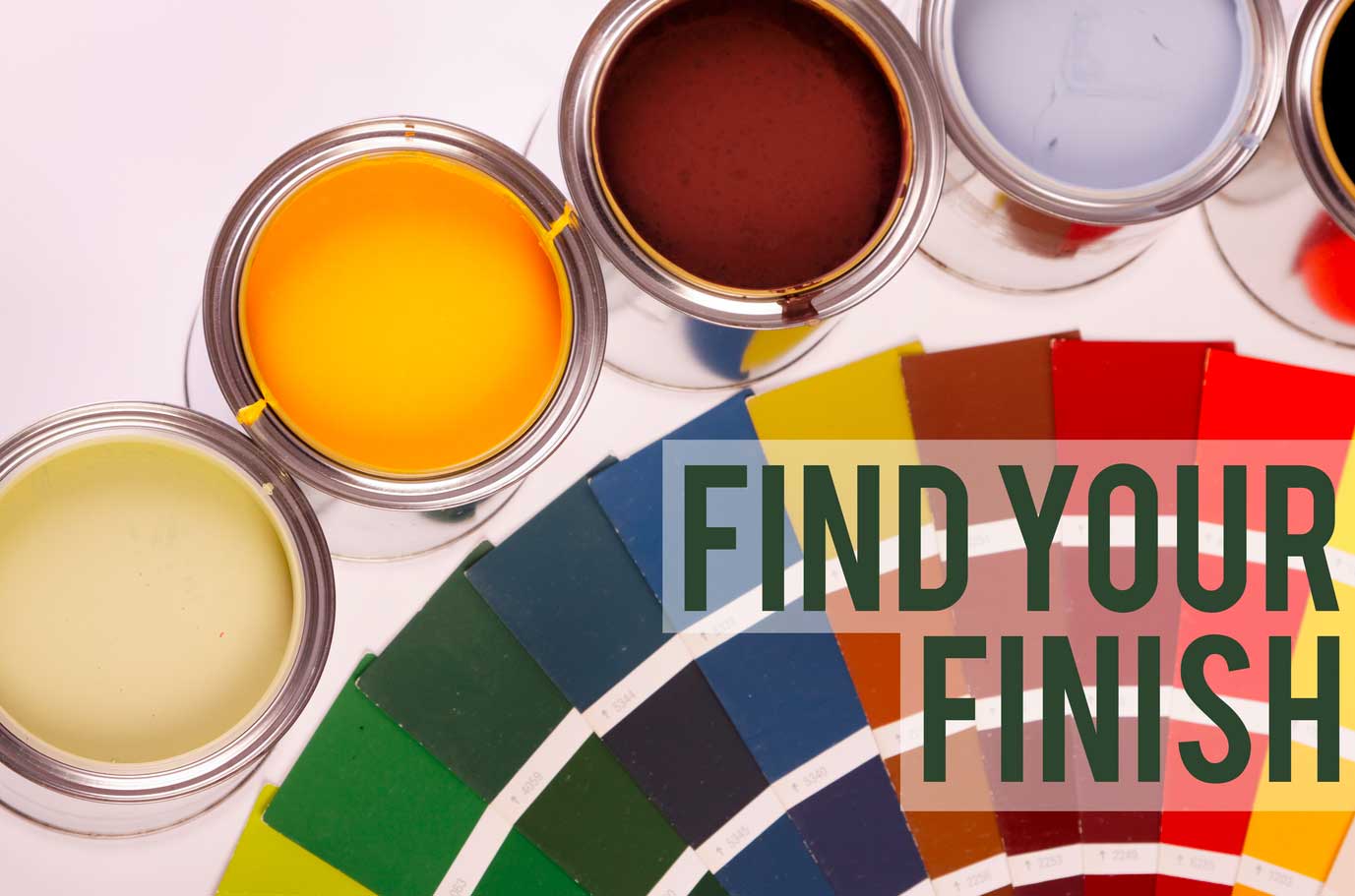
From paints to primers, to stains and wood conditioners, there are a lot of options out there. It can be tough to know what is the best option for you. First, consider what kind of style you are looking to create. For example, a natural stain on an ornate, raised panel door, like our Bellingham cabinet door, can create a beautiful, traditional aesthetic.
Or, if you are looking for something more modern, a paint finish might be a better choice. Just as there are many options for stains, paints come in a wide variety of colors. For example, a typically traditional Shaker style door could be painted with Sherwin Williams’ Naval color, which was their color of the year for 2020, to achieve a trendy, modern look.
Pros and Cons For Finishes
A great way to decide on which finishing method to use is to make a pros and cons list for each option. This way, you have a full understanding of the benefits, uses, and possible drawbacks before deciding which is for you.
Paint Finish Cabinets
A paint finish can be a great choice for your cabinets if you are looking for bright, unique colors. In addition to the wide variety of colors available, paint is also easier to change than stain when you get ready for a new look. One downside, however, to choosing a paint finish is that it is not as durable as a stain finish.
Stain Finish Cabinets
If you are looking to highlight the natural beauty of your cabinets’ wood, then a stain finish could be a great choice for you. Stains come in a variety of shades and colors, so finding the perfect match for your aesthetic won’t be hard. Since stain sinking into the grain of your cabinets, it is much more work to change the stain color.
If you are still not sure which option is best for you, check out these two inspirational posts from HGTV on the hottest colors and trends for your kitchen in 2021!
Before You Open Your Cans

Before you begin pouring your primer, but sure that you have your drop cloth and painter’s tape in place. You will also want to ensure you have good ventilation and the proper safety gear like a protective mask and gloves.
A Note For Those Using Brushes
While using a paint sprayer will no doubt produce the best results, they do require a bit of know-how, equipment, and space. So, if you are lacking in these, you may find yourself with no option but brushes. However, this does not mean that your cabinets can’t turn out beautifully done. If you are using a brush, be sure to take your time and to keep the strokes even and neat. Between coats, inspect the door for any noticeable brush strokes, bubbles, or unevenness.
You should lightly sand these trouble spots with the 220-grit paper before applying the next coat. Even by hand, two coats should be sufficient; however, if after the second coat fully dries you notice imperfections, then sand and repeat.
Painted Finish Cabinet Doors
Steps to Painting Cabinet Doors
1. Sanding
When painting cabinets, the first step is to ensure that all surfaces are sanded smooth. To accomplish this, you will need a power sander, sandpaper, and a sanding sponge. Ideally, you should first sand with 120-grit sandpaper, then wipe away the dust with a tack cloth. Next, use you will need to use 220-grit sandpaper to ensure the smoothest surface you can.
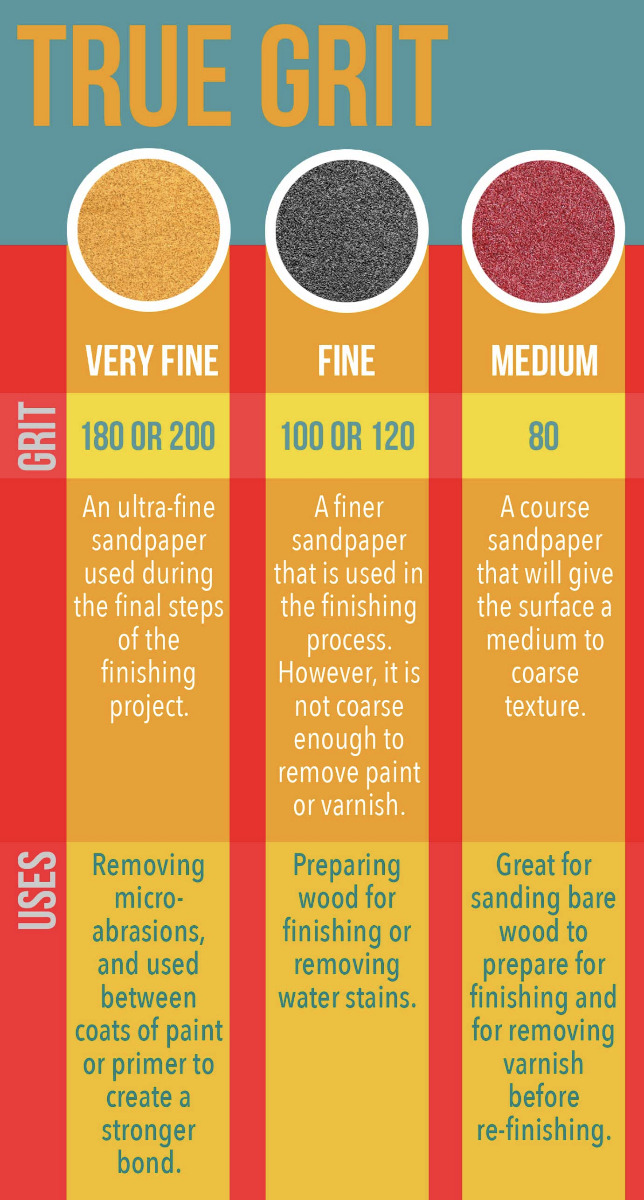
After wiping down your door again with the tack cloth, take a moment to inspect all the surfaces for any rough areas or damage, as these will be more visible after painting. If you choose to order your unfinished doors from us, they come pre-sanded with a 220-grit and arrive ready to finish!
2. Primer
Using a proper primer is essential for getting the best results when you paint. The primer is the foundation that the paint will adhere to, so it is not a step to skip. Some brands offer a paint and primer in one, but these can be less effective or require additional coats. We recommend a separate paint and primer for your cabinets. It is best to do 2 coats of primer so that you have a nice, even base to paint onto.
Between coats of primer, you should lightly sand the surface with 220-grit sandpaper. This will create a slightly textured surface for the second coat to cling to. Don’t forget to wipe away any dust before applying your second coat.
3. Time to Paint
Once your second coat of primer is fully dried, you can begin painting. For the best results, you should always use a paint sprayer. A sprayer will allow you to evenly apply the paint, without having to worry about things like brush strokes. If you are new to sprayers, then you should practice on a test surface before you begin painting your doors.
Pro Tip from Our Expert
Painting cabinet doors can be tricky, so don’t be afraid to seek advice.
Here is what our Sales Manager Andrew has to say on the topic:
Be realistic with what you as a homeowner are capable of accomplishing. Practice first with the finish that you want to apply to your cabinet doors. Remember: professionals are the experts and don’t be afraid to ask for help from them.
Just like the primer, it is best to apply at least two coats of paint on your cabinets. Before you put down the second coat, but sure the first has fully dried. Several factors will influence drying time for your cabinets including weather and the base the finish is made with.
Oil-Based Products
For oil-based products, the drying and curing time will be longer. Also, the oil-based products will have a distinct smell, so you will want to make sure to have proper ventilation. Keeping the air moving and the humidity low will help your cabinets dry faster as was noted earlier by our operations manager Joe.
Drying Time
While the exact timeline will vary, it will take around 1-2 weeks for your cabinets to be dry to the touch, and then around a month to cure. While the cabinets are curing, it is very important that you treat them lightly.
Once the curing process is complete, your paint will be at its strongest!
Steps for Stain Finish Cabinets
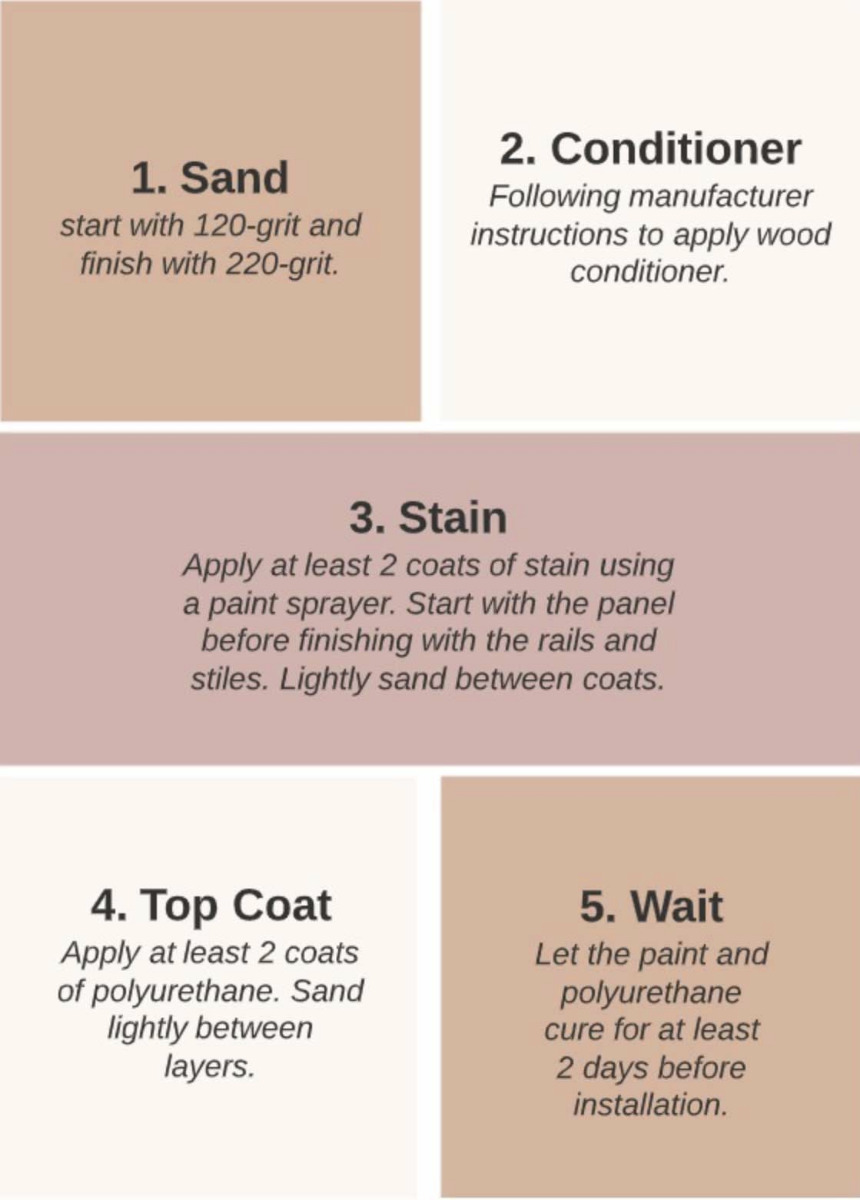
While a painted finish will sit on top of the door, a stain will soak into the grain of the wood. This means you will need to choose a solid wood material. While MDF is an excellent choice for painting, it cannot be stained since it has no grain.
Staining is an excellent way to highlight the natural beauty of the wood, and it can be used to create stunning traditional styles. Let’s take a look at the steps to finishing a door with stain.
1. Sanding
Just like with painting, the first step is to ensure your surface is smooth and free of any splinters or rough patches. The best way to do this is to start with coarse sandpaper, around 120-grit, and work your way up to a finer one at 220-grit. Be sure to use your tack cloth to keep your surface clean as you work.
2. Wood Conditioner
You can think of a wood conditioner as similar to a primer for painting. A wood conditioner helps to fill in the wood grain so that the stain can be applied more evenly. Applying a wood conditioner will also make it easier to change your stain later if you decided to go for a new style.
When applying the wood conditioner, the ideal conditions are similar to painting: around 70 degrees Fahrenheit and 50-70% humidity. You want to give the conditioner at least 30 minutes to dry, but you should not wait longer than 2 hours before applying your stain.
3. Staining
Before you start applying your stain, be sure to read any and all labels on your product. It is also important to be sure to have on your gloves. You can apply your stain with a brush, rag, or sprayer. However, if you choose to use a sprayer, be sure to follow any instructions that the stain has for sprayers. Some gel stains will be too thick for a sprayer, so it would have to be watered down before use.
If you are looking for a good, wipe-on stain, Watco has you covered. In addition to being easy to apply, the Watco stain will give you a rich color while preserving and highlighting the beauty of the wood. As you are working, be sure to wipe, or brush, the stain with the grain pattern.
Here is a pro tip from our Inside Sales Associate Jason:
Always wipe your excess stain off going in the direction of the grain. This will ensure the stain goes into the wood instead of laying on top of it. It also shows the grain off to its best advantage.
Drying Time For Stain
With the right conditions, 70 degrees Fahrenheit and 50-70% humidity, you should allow for 1-2 days for the stain to dry on your cabinets. During this time, it is important to keep air circulating, as this will help the stain dry and help with the odor. Also, be sure that no dust or debris settles on the doors, as these can become sealed to the surface.
Clear Coat Final Step
Whether you are painting or staining, it is important to properly seal the door with a clear coat to protect all the hard work you have accomplished. Clear coat comes in a variety of sheens and bases. It is important to allow the finish you applied to dry for 24-48 hours before applying your clear coat.
General Finishes makes a great clear topcoat that can be ordered from flat to gloss. It is a water-based polyurethane finish, and it should be noted that it can cause yellowing on white paints. It can also have this effect on other lighter colors, but not to such an extent.
With a clear coat finish, you must be working in a clean, dust-free space. If you have dust and debris on the doors when the clear coat is applied, then these will be sealed to the door and noticeable.
If you are looking for more on clear coat finishes, the folks at resin-expert have a great article on the subject.
Feeling Overwhelmed?
As you can see from the guide above, achieving a beautiful finish on your cabinets is no easy feat. If you are feeling unsure or overwhelmed, there are other options available to you.
The first, and most obvious, is to hire professionals. Hiring professional to paint your kitchen cabinets is a great way to not only ensure a wonderful result but also to eliminate the headache and stress of doing it yourself.
A less obvious option is to choose a material like thermofoil. Thermofoil is a vinyl laminate that is heated and pressured onto an MDF core. Thermofoil comes in a wide variety of colors and textures, so you can achieve whatever aesthetic you need. From modern to traditional and even “natural” wood grain, thermofoil is an excellent finish for your cabinets.
Hear what our Inside Sales Rep Taylor has to say about thermofoil:
Thermofoil comes in different textures, so you have more choices without having to do the work of finishing the doors yourself. In addition, MDF isn't going to warp or twist. So, Thermofoil can be better for large doors or panels. And you don't have to do an added center rail for larger doors if you don't like the look of it.
Finishing Touches For Your Cabinets
As you can see, the process of finishing your cabinets is no easy feat. It is important to carefully plan out your project and to thoroughly read all instructions on products you plan to use. These instructions will also have important safety guidelines, so it is vital to not skip that step.
Even though this process will take time and effort, the results will be worth it! A new color or finish can completely change the aesthetic and feel of your kitchen. If you opt for a trendy two-tone color for your kitchen cabinets, then you will also get the benefit of an added sense of space and depth.
If you are struggling to get started, or are ready to start ordering, then feel free to give us a call at 1-844-326-6680 or an email to info@cabinetdoormart.com, our experts would love to help you complete your projects!



